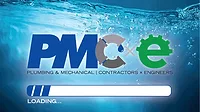How fleet solutions benefit the plumbing and mechanical industry
Fleet management is cost-effective and easy to implement for businesses of all sizes.


When you own or manage a field service business, you rely on a mobile workforce to generate revenue. And, if you specialize in plumbing, HVAC, electrical, landscaping or similar services, you aren’t just managing an office, you have people and vehicles to keep track of to ensure your customers’ needs are met. Efficiency is key, and any expenses need to generate returns to make them worth it.
IoT and wireless technology can revolutionize fleet and vehicle management and the everyday tasks that go along with it. A fleet management solution is cost-effective and easy to implement for businesses of all sizes, and small plug-and-play tracking devices that capture data from each vehicle can be installed at a customer’s own pace, ensuring business continues while the solution is being fully implemented.
The good news is it doesn’t require an IT department to set up a fleet tracking solution. You need a reliable wireless connection, and the devices can be installed on a wide variety of vehicles. The accompanying online dashboard and reporting is customizable and easy to set up, and, as you gather data over time, more efficiencies can be created.
The benefits of a fleet tracking solution can have a distinct impact on your bottom line, and all can show immediate results.
Route optimization
Providing a great experience for customers is important in all industries, but especially for those in the plumbing and HVAC fields. Chances are you are called to fix a problem or install a necessary item, and customers have high expectations for service. Arriving on time and completing the work efficiently are high priorities. Data gathered from GPS-enabled fleet trackers can be used to locate vehicles, optimize routes and dispatch drivers closest to the call so you can meet appointment windows and respond faster to customers. At the same time, optimizing routes and reducing vehicle idle times between appointments can create significant mileage and fuel savings that, in turn, extend the life of your vehicle and save you money.
Vehicle maintenance
Keeping vehicles functioning and on the road is vital to field service businesses. Even the most skilled people can’t serve customers without reliable vehicles to get them to and from appointments. A fleet management solution provides control over planning and maintenance, ultimately helping the bottom line. You can proactively schedule maintenance based on easy-to-read reports, order parts more accurately and resolve issues in a timely manner by being alerted in real-time to warning lights in every one of your vehicles.
Fleet management solutions can detect driver behavior such as harsh braking, rapid acceleration, idling and speeding, which can lead to maintenance issues, including battery and brake replacement, tire wear, engine overheating and increased fuel consumption. By being alerted to these behaviors in real-time and modifying behavior, these issues can decrease significantly over time. And by leveraging these critical insights for every vehicle and driver, even small adjustments can save a lot of money.
Driver safety
In addition to driver behaviors that can lead to ongoing maintenance, a fleet management solution can also increase driver safety by monitoring for speeding, phone usage while driving and seat belt compliance. By getting alerts for these types of behaviors, you can provide feedback to drivers, reduce accident risk and control insurance costs. You can also track this behavior over time and reward drivers for their positive behavior. Additionally, adding dashboard cameras can increase safety and help protect your company by having live images and a record of any incidents or accidents that may occur.
Workload planning
The longer you have a fleet management solution, the more it pays off. Using the online portal, you can create customized month-over-month reports that can help you predict and plan for workforce needs, seasonality highs and lows, mileage, fuel costs and time requirements for jobs.
Mobile timekeeping
The use of mobile time cards can reduce time spent on manual entry or requiring a driver to “check in” at a specific location when starting or ending their route. It also helps eliminate human error and the need to decipher hard-to-read handwriting. One customer with 25 employees told us when he did the math, he determined if each of his employees’ time cards were off by only 10 minutes per day, that could add up to $100,000 per year. Using mobile time cards can also save driver time and help reduce overtime costs.
Before implementing a fleet management solution, we encourage business owners to set goals and align them with budget and staffing requirements. A best practice is to engage your employees in the planning and ensure they understand why you are implementing this new technology. Those discussions can also help you determine who has access to the online dashboards and reporting and how it will be used. Lastly, ensure you provide training for your employees so everyone understands how the technology works and what is required of them.
One thing we hear from our customers all the time is it doesn’t take long for them to see the benefits of these technology solutions, and buyers’ remorse is rare. The efficiencies of scheduling, routing, tracking and safety provide a positive financial return even with smaller businesses. We encourage field service businesses of all sizes to seek out information from their wireless carrier to determine if a fleet management solution is right for them.
Looking for a reprint of this article?
From high-res PDFs to custom plaques, order your copy today!






